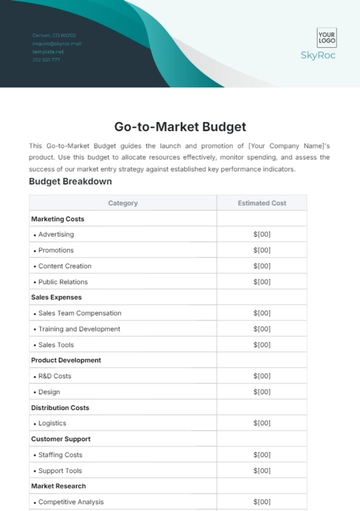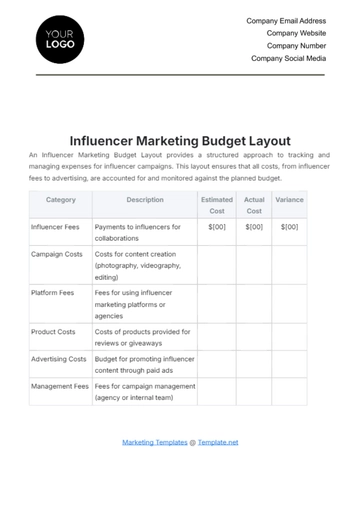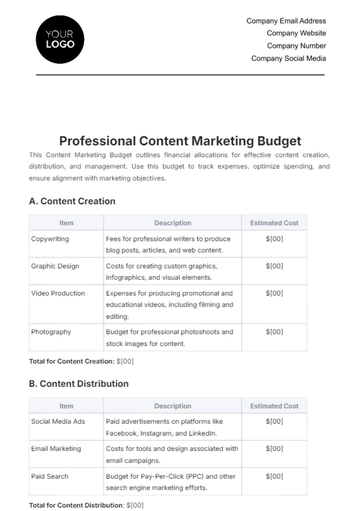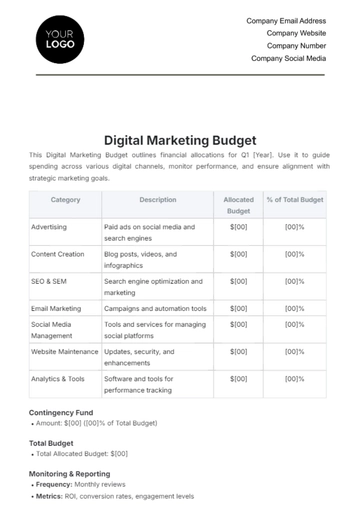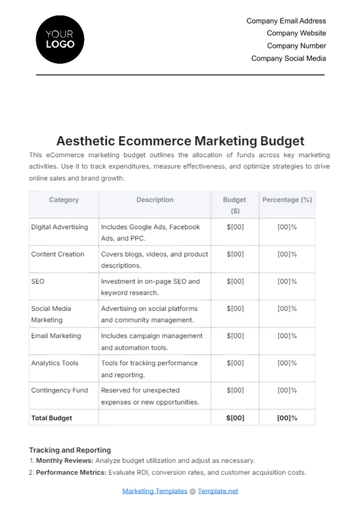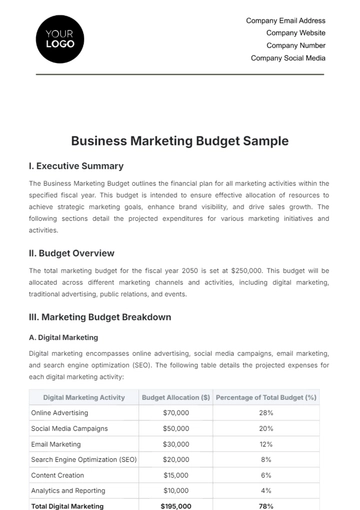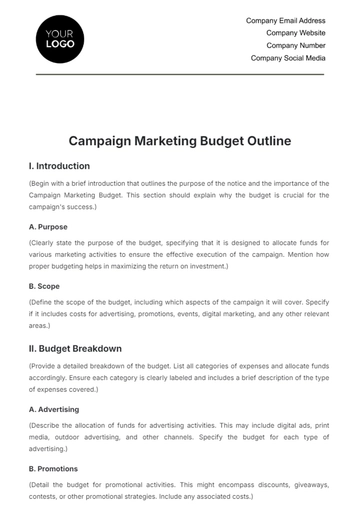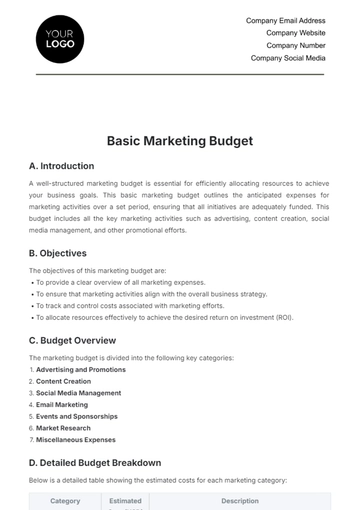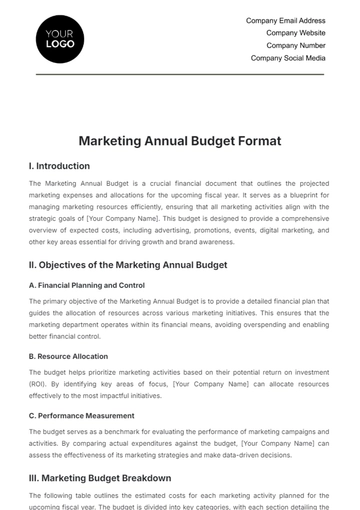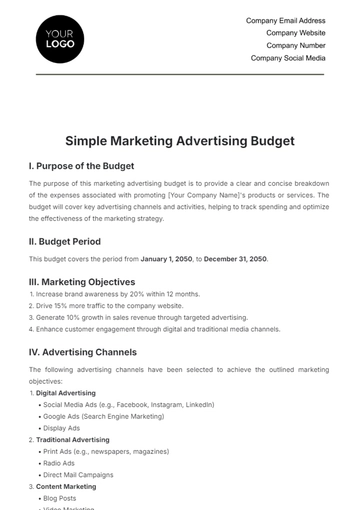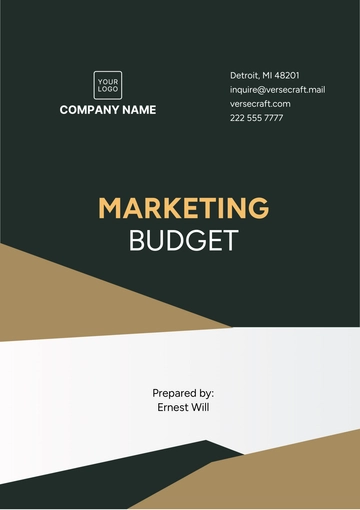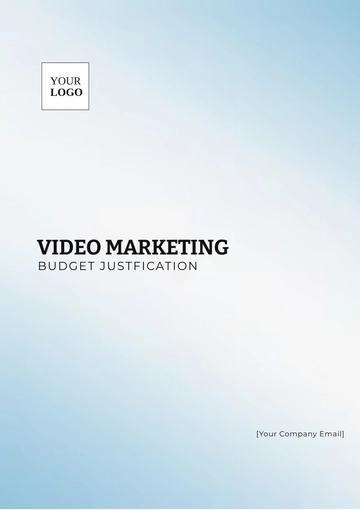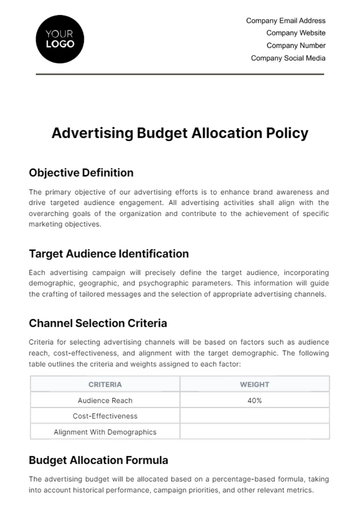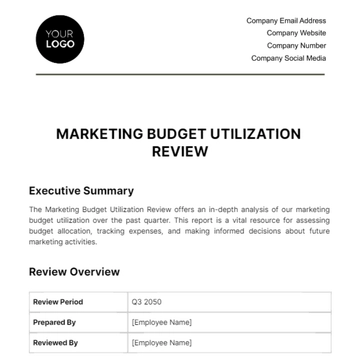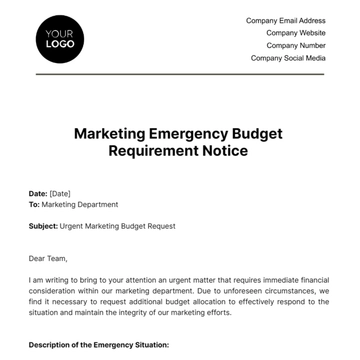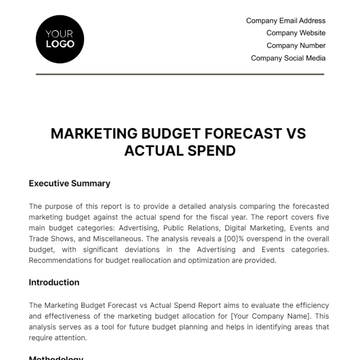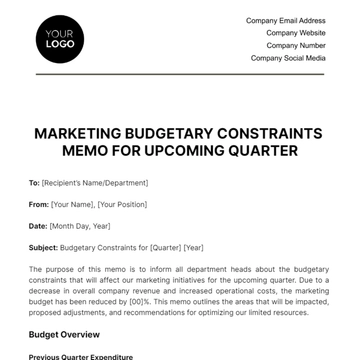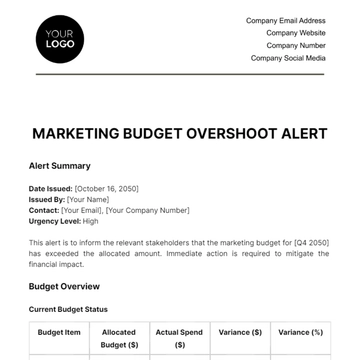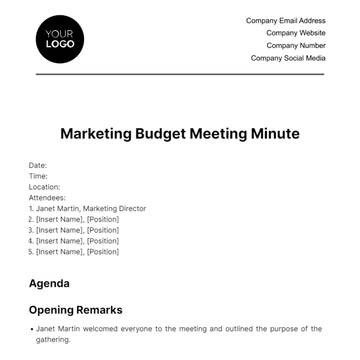Free Video Marketing Budget Justification

Prepared by: [Your Name]
Date: [Date]
I. Introduction
In the digital age, video marketing has emerged as a powerful tool to enhance brand visibility, engage potential customers, and boost sales. This Video Marketing Budget Justification document aims to support allocating financial resources towards our video marketing initiatives. This document will demonstrate how these investments are expected to yield substantial returns for the company by detailing the expenses involved in producing, distributing, and promoting video content.
II. Budget Breakdown
Category | Description | Cost ($) |
|---|---|---|
Video Production | Pre-production, filming, post-production | 25,000 |
Distribution | Platforms and media buying | 10,000 |
Promotion | Advertising, influencer partnerships, PR | 15,000 |
Miscellaneous | Contingency, miscellaneous expenses | 5,000 |
Total: | 55,000 |
III. Justification of Costs
A. Video Production
High-quality video content requires significant investment in various stages:
Pre-production: Concept development, scripting, and storyboarding to ensure a compelling narrative.
Filming: Professional videography, including costs for equipment and crew.
Post-production: Editing, sound design, and special effects to create polished video content.
B. Distribution
Effective distribution ensures our videos reach a wide audience:
Platforms: Costs associated with hosting videos on platforms like YouTube, Vimeo, and social media channels.
Media Buying: Paid placements to increase visibility and reach targeted demographics.
C. Promotion
Promoting our video content helps generate buzz and engagement:
Advertising: Paid ads on social media, search engines, and other online platforms.
Influencer Partnerships: Collaborations with influencers to leverage their audience for greater reach.
Public Relations: Press releases and media outreach to amplify our video campaigns.
D. Miscellaneous
The category accounts for unexpected costs that may arise during the video marketing campaign, ensuring flexibility in budget management. It serves as a contingency fund to cover additional needs or unforeseen expenses that were not initially anticipated.
IV. Expected Outcomes
Investing in video marketing is anticipated to deliver the following benefits:
Increased Brand Awareness: High-quality video content will enhance brand visibility and recognition.
Higher Engagement: Engaging videos will capture the audience's attention and foster interaction.
Boosted Sales: Informative and persuasive videos can drive conversions and increase sales figures.
Improved Customer Trust: Professional video content builds credibility and trust with our audience.
V. Supporting Data
Extensive research and industry data support the effectiveness of video marketing:
Consumer Preference: Studies show that 54% of consumers prefer to see videos from brands they support (Source: HubSpot).
Conversion Rates: Video marketers get 66% more qualified leads annually (Source: OptinMonster).
ROI: 88% of video marketers report positive ROI (Source: Wyzowl).
VI. Conclusion
In conclusion, the proposed video marketing budget of $55,000 is a strategic investment aimed at maximizing our brand's visibility, engagement, and sales. The breakdown of costs demonstrates a focused approach to producing, distributing, and promoting high-quality video content. With substantial supporting data and clear expected outcomes, this budget allocation is justified as an essential component of our marketing strategy.
- 100% Customizable, free editor
- Access 1 Million+ Templates, photo’s & graphics
- Download or share as a template
- Click and replace photos, graphics, text, backgrounds
- Resize, crop, AI write & more
- Access advanced editor
Template.net's Video Marketing Budget Justification Template simplifies the process of justifying your promotional expenditures. This editable and customizable template helps you outline costs for video production, distribution, and analytics. Editable in our AI Editor Tool, it allows easy customization to match your marketing objectives. Create a compelling case for your video marketing budget and secure the funding needed for successful campaigns.
You may also like
- Budget Sheet
- Personal Budget
- Non Profit Budget
- Monthly Budget
- Project Budget
- HR Budget
- Company Budget
- Home Budget
- Weekly Budget
- College Budget
- Business Budget
- Construction Budget
- Small Business Budget
- Hotel Budget
- Annual Budget
- Home Renovation Budget
- Household Budget
- Student Budget
- Grocery Budget
- Marketing Budget
- Corporate Budget
- Startup Budget
- Manufacturing Budget
- Church Budget
- University Budget
- Annual Budget Plan
- Event Budget
- Operating Budget
- Travel Budget
- Food Budget
- IT and Software Budget
- School Budget
- Real Estate Budget
- Sales Budget
- Conference Budget
- Budget Finance
- Freelancer Budget
- Budget Advertising


